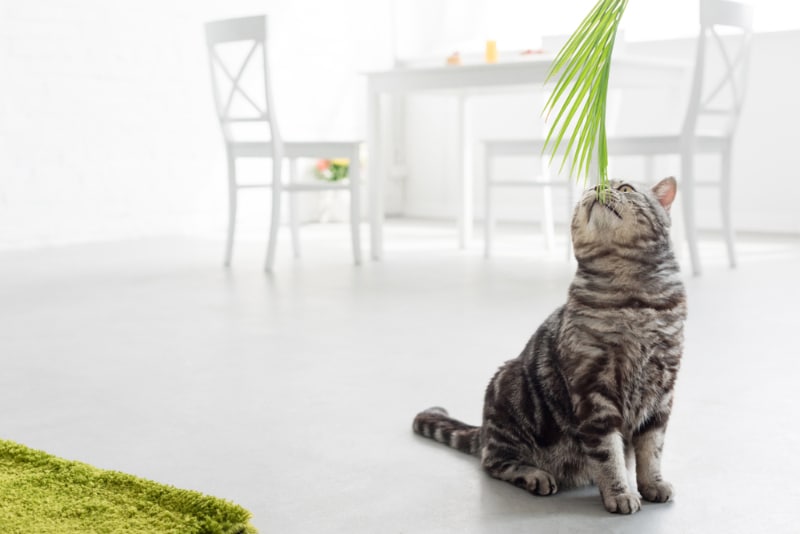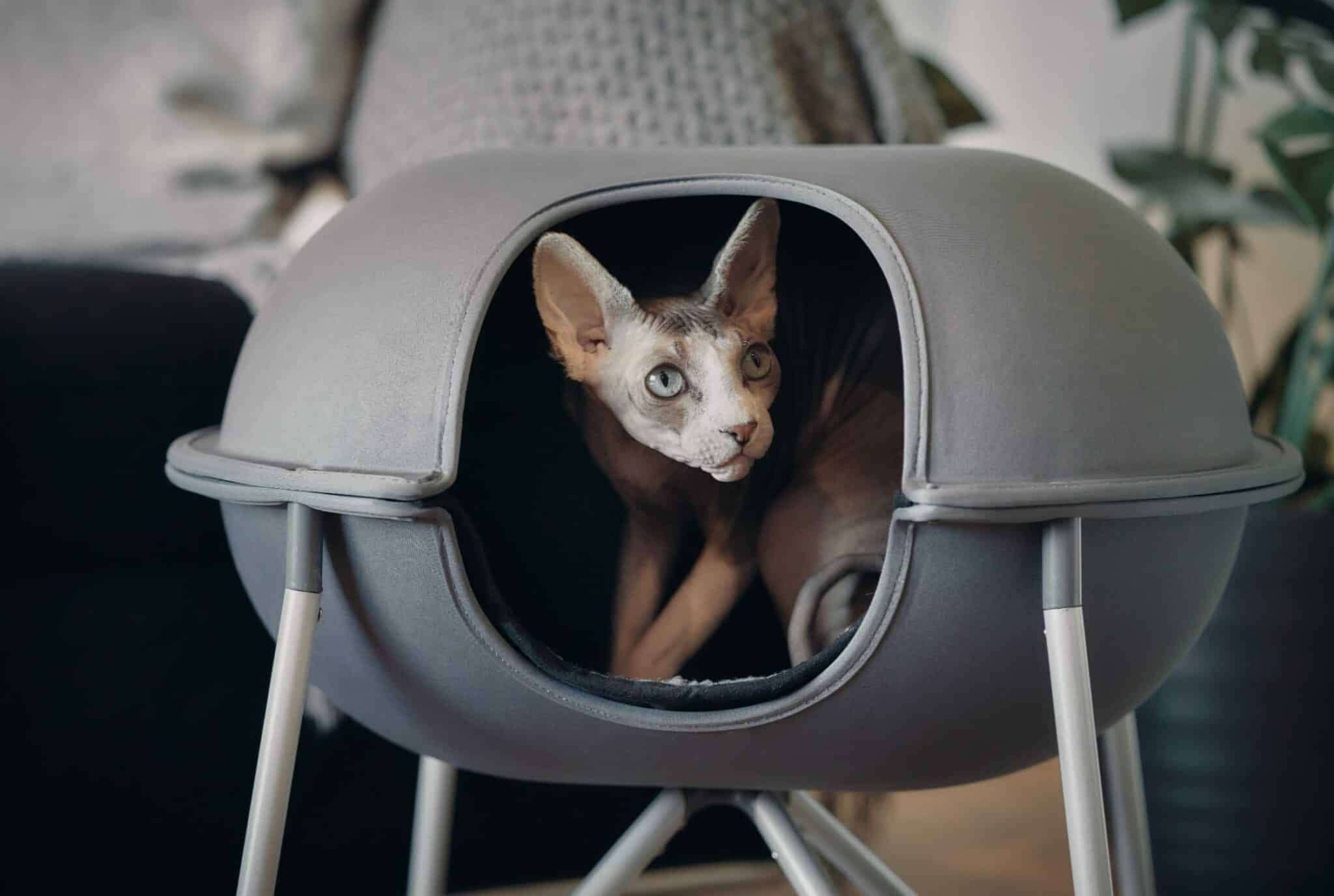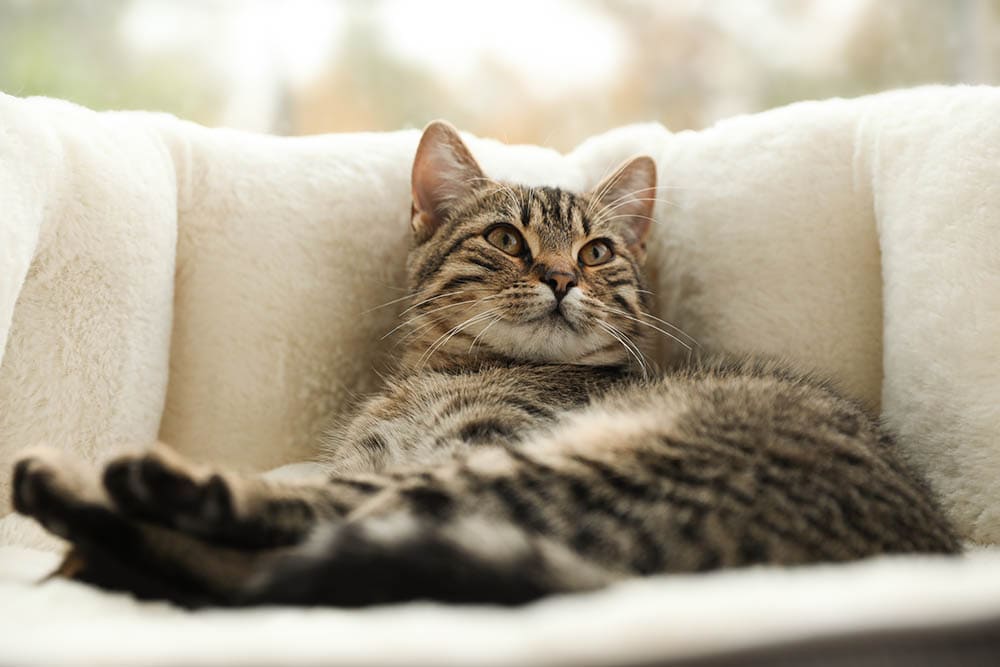As creatures of habit and sticklers for routine, adjusting to life in a new environment can be challenging and even scary for cats. Bolder felines tend to settle in quickly, whereas more cautious or shy cats take longer to come around.
Luckily, there are some things you can do to make the transition easier and help your new furry friend feel safe and secure, and we’ll address everything in this guide.

What You’ll Need
- A quiet room free of other pets
- Food and water bowls
- Food
- Water
- Litter box
- Litter
- Cat bed
- Toys
- Treats
- Scratch post
- Pheromone products (optional)
- An item of clothing with your scent (optional)


Top 8 Tips to Settle a Cat in a New Home
1. Start Before Your New Cat Comes Home
If you haven’t picked your new cat up yet, ask if you can leave an item of clothing with your scent on it with the cat at their foster home or shelter until the day you collect them. This helps create a sense of familiarity for your cat. When you pick them up, put the same item in the carrier and in the room your cat will be staying in for the first few days.
2. Set Up a Quiet Room
Setting up a private, quiet room with all the essentials is another important step to take before your new kitty comes home, both for them and any other pets. This room will be the cat’s base for the first few days while they settle in and get used to their new environment. In this room, put a cozy bed, hiding spots, food, water, a scratch post, toys, and a litter box (place this away from the food and water bowls).
Ideally, your cat’s “hotel” room should also contain something they can climb up on like shelves or a cat tree, as it’s natural for cats to like being up high, surveying their environment. This helps give your new cat a sense of security.
Some people use cat pheromone diffusers—which produce synthetic pheromones that mimic the natural, comforting ones cats produce themselves—to help their new arrivals feel more secure.
3. Give Your Cat Space
When you finally bring your cat home, place the carrier in the room you set up and open it. Don’t force the cat to come out; instead, let them come out of the carrier at their own pace. Sit near the carrier and speak softly to encourage your new friend but avoid overwhelming them with attention or having the whole family swarm in to gush over them.
Understandably, family members would be excited to welcome the new arrival, but it’s essential that the kitty’s environment is as calm, quiet, and stress-free as possible. Introduce new family members gradually and make sure everyone is schooled on how to interact respectfully with the cat.
If your cat comes out of the carrier and approaches you, that’s great, but some cats will be very timid and won’t come near you for some time. That’s okay, too. Let them come to you when they’re ready. If your cat seems very nervous of you, leave the room for a while. They may explore a little while you’re gone.

4. Offer Treats
One way to show your cat that you’re not a threat and form a bond is to offer some tasty tidbits. If they’re afraid, you can just put this on the ground at a distance from you for them to collect when they want to. If they come to get the treat, start putting treats closer to you until the cat feels comfortable enough to approach you.
5. Play with Your Cat
If your cat is out of the carrier, exploring, you can try playing with them with a toy. This is a good way to start forming a bond and help your cat feel more relaxed. Watch their body language when attempting to play, and stop if they appear uncomfortable. There’ll be plenty of time for that later!
6. Gradually Introduce Other Pets
If you have other pets, it’s best not to introduce them face-to-face immediately. Instead, let them smell each other under the door of the room your new cat is staying in. You can also try exchanging bedding between your pets to get them used to each other’s smell and/or feeding them treats on other sides of the door to form positive associations. Another tip is to let them explore each other’s “territory” while the other is not present.
When you progress to face-to-face meetings, It’s ideal to do so first through a screen door or baby gate. If this isn’t possible, don’t worry—just closely supervise. End the meeting if one of your pets gets aggressive.
If you’re introducing a dog to your cat, it’s best to leash the dog for the first meetings to stay in control. Some dogs are super chill around cats, whereas others get overexcited.

7. Open Up Other Areas
Once your new kitty seems comfortable in their starter room, you can start opening up the rest of the home to them. Letting them explore one more room at a time is one option, but if your cat is outgoing, they may be happy to start exploring the whole house. Go with what you feel is best.
8. Be Patient
Always keep a calm and reassuring demeanor around your new cat. Remember that some cats need more time than others before they feel secure in a new home, so avoid getting frustrated if your cat doesn’t come to you right away. Just keep being gentle and encouraging with them, and they’ll eventually learn to trust you.

Is My New Cat Settling in Well?
If your cat is settling in well, it will be easy to tell.
- Approaching you
- Rubbing against you
- Eating properly
- Exploring the house
- Not hiding away
- Asking for attention from you
- Playing with you or toys

Final Thoughts
In addition to setting up a cat-friendly, quiet space with all the necessities, patience and a gentle approach are the keys to helping a cat feel safe in a new environment. The trick is to never rush it and try not to feel disappointed if your cat doesn’t come to you immediately. This is completely normal—some cats take several days or even weeks to settle and feel more confident.
Featured Image Credit: New Africa, Shutterstock










